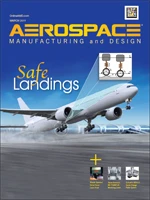The key to solving the looming aerospace workforce deficit is to educate, recruit, and train a new generation to ensure a sufficient pipeline of skilled talent to support this ever-growing and critical industry. The U.S. has focused intently on building the workforce for the aerospace industry; and, states like Georgia have prioritized this industry for growth. In fact, the Georgia Institute of Technology’s Daniel Guggenheim School of Aerospace Engineering is one of the oldest, and currently the largest aerospace engineering program in the U.S., with more than 700 undergraduate and 500 graduate students. Additionally, the Middle Georgia College Aviation School offers programs in Flight (both fixed wing and helicopter), Airport Management, Air Traffic Control, Avionics, Aircraft Structural Technology, and Aviation Maintenance Technology. In fact, the program was named the top new air traffic control program in the nation by the FAA in 2007. The school has more than 500 students that may pursue any of four baccalaureate degrees, four associate degrees, and 19 certificates.
 Georgia also has a resource for finding solutions to industry needs. The Georgia Center of Innovation for Aerospace accelerates companies’ growth by helping them commercialize new products, services, and business models, and by connecting them with university research and industry expertise as well as other Georgia resources. The Center partners with the state’s technical colleges, which offer FAA-certified degrees to ensure a steady supply of highly skilled industry talent. The Center also works on a regional basis with educators and industry partners to introduce children and young adults to career opportunities in the industry. Furthermore, Georgia is home to industry giants like Boeing, Cessna, Gulfstream, Lockheed Martin, Bombardier, and Pratt & Whitney, and continues to attract aerospace companies because of its commitment to encourage and retain a strong pipeline of talent. In fact, the Governor’s Office of Workforce Development has invested more than $1 million to build an aerospace sector workforce supply chain. The Georgia Work Ready program aligns education, workforce development, and training to meet the needs of aerospace companies in Georgia’s aerospace clusters. The Georgia Work Ready program also works with existing aerospace industry talent to leverage current skills and provide additional training to meet the evolving needs of the industry. Providing the industry with specialized training Georgia is home to the No. 1 ranked workforce training program in the nation, Quick Start, which provides customized workforce training free-of-charge to qualified businesses in the state.
Georgia also has a resource for finding solutions to industry needs. The Georgia Center of Innovation for Aerospace accelerates companies’ growth by helping them commercialize new products, services, and business models, and by connecting them with university research and industry expertise as well as other Georgia resources. The Center partners with the state’s technical colleges, which offer FAA-certified degrees to ensure a steady supply of highly skilled industry talent. The Center also works on a regional basis with educators and industry partners to introduce children and young adults to career opportunities in the industry. Furthermore, Georgia is home to industry giants like Boeing, Cessna, Gulfstream, Lockheed Martin, Bombardier, and Pratt & Whitney, and continues to attract aerospace companies because of its commitment to encourage and retain a strong pipeline of talent. In fact, the Governor’s Office of Workforce Development has invested more than $1 million to build an aerospace sector workforce supply chain. The Georgia Work Ready program aligns education, workforce development, and training to meet the needs of aerospace companies in Georgia’s aerospace clusters. The Georgia Work Ready program also works with existing aerospace industry talent to leverage current skills and provide additional training to meet the evolving needs of the industry. Providing the industry with specialized training Georgia is home to the No. 1 ranked workforce training program in the nation, Quick Start, which provides customized workforce training free-of-charge to qualified businesses in the state.
All this concentration on developing aerospace talent, high quality education, and best-in-class workforce training has made Georgia the nation’s most productive aerospace workforce. Georgia’s aerospace exports grew by 55% from 2006 to 2009 with an industry leading $160,000 of exports per manufacturing employee in 2009. To compete on the global playing field, it is imperative that states and regions move aggressively to keep their aerospace industries growing and thriving. Georgia is leading the way in educating, recruiting, and training the next generation of aerospace workers who will be the foundation of Georgia’s aerospace industry. This pipeline of highly skilled workers will maintain and enhance the competitiveness of Georgia aerospace companies in the international marketplace.
Steve Justice
Director
Georgia Center of Innovation (COI) for Aerospace
Atlanta, GA
aerospace.georgiainnovation.org

Explore the March April 2011 Issue
Check out more from this issue and find your next story to read.
Latest from Aerospace Manufacturing and Design
- Heart Aerospace relocates to Los Angeles
- Fixtureworks introduces Stablelock Clamps
- Piasecki acquires Kaman's KARGO UAV program
- PI Americas’ long-travel XY piezo nanopositioners-scanners
- AAMI project call submission deadline extended to May 12
- Jergens launches cast iron tooling column additions
- Airbus to acquire assets relating to its aircraft production from Spirit AeroSystems
- FANUC America's Cobot and Go web tool





